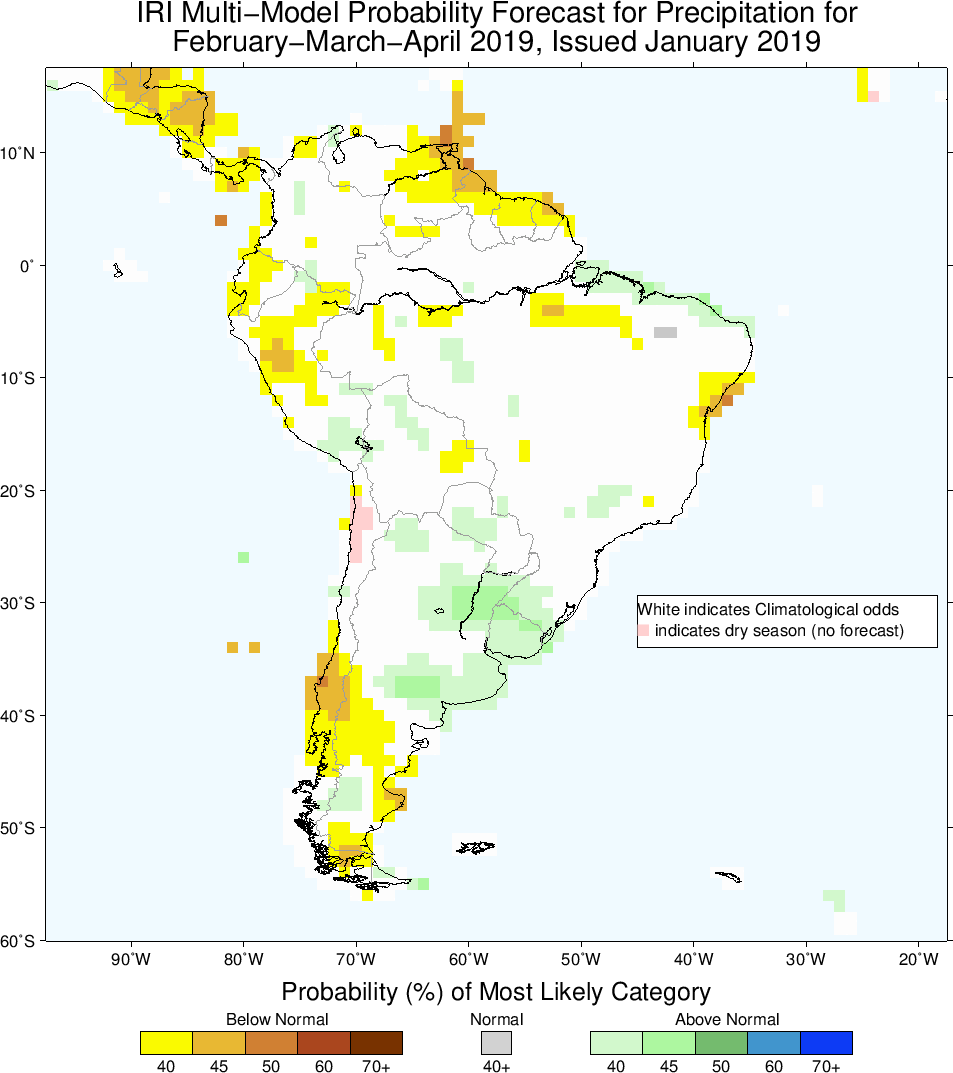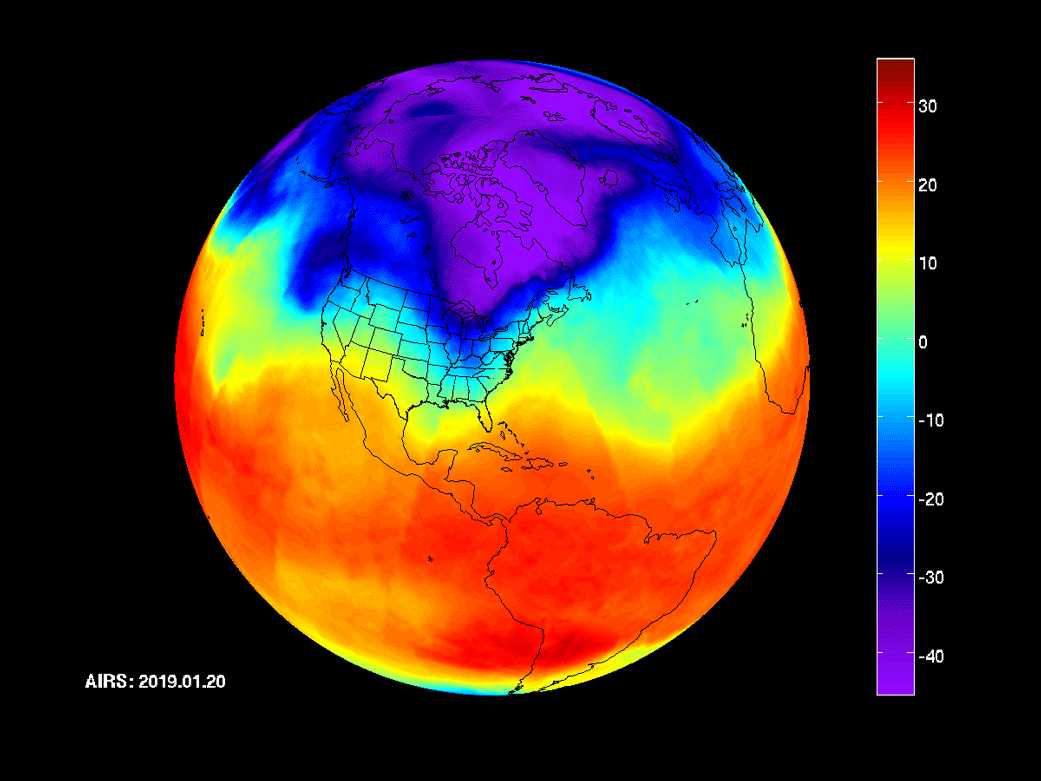| February 2, 2019 | No.118 |
January 2019
(Back Issues Here)
January 2019 quite simply was dry, windy and cold here at the Palmira Station. The reports from around the District of Boquete for January 2019 echo the same:
Rainfall for
January 2019 |
|||
Area |
Contributors |
January |
Total 2019 |
El Santuario |
Terry Zach |
0.11 | 0.11 |
Jaramillo Arriba |
Steve Sarner |
0.24 | 0.24 |
Jaramillo Abajo |
Don Berkowitz |
0.02 | 0.02 |
Jaramillo Abajo |
Bobi McGann |
0.04 | 0.04 |
El Salto Arriba |
Rodrigo Marciacq |
0.10 | 0.10 |
Brisas Boquetenas |
Austin Perry |
0.00 | 0.00 |
| Brisas Boquetenas | Richard Sturtz | 0.01 | 0.01 |
Los Molinos |
Sela Burkholder |
0.02 | 0.02 |
| Los Molinos | Fred Donelson | 0.00 | 0.00 |
Santa Lucia |
Paula Litt |
0.08 | 0.08 |
Lucero (Cielo Paraiso) |
Michael Mullin |
1.54 | 1.54 |
Cerro Verde |
Charlotte Lintz |
0.66 | 0.66 |
Boquete Country Club |
Paul Arrandale |
0.04 | 0.04 |
Palmira Abajo |
Betty Gray |
0.01 | 0.01 |
Palmira Arriba |
Lloyd Cripe |
0.06 |
0.06 |
n/a = not currently available but will be posted when available |
|||
Thanks again to all the volunteer rainfall data collectors. We really appreciate it and it is helping us to better understand micro rain climates in the Boquete District.
The monthly rainfall at our Palmira Arriba station was very little with 0.06 inches. It is the "Dry Season" with wind and no rain.
Compared to the data for the last 11 years at our station, this is not so unusual for January. There have been 4 other years with 0.0 rain and the average for the 11 years is 0.48 inches. Check out the data for yourself for the last 11 years at this. This is the "Dry Season"! Windiness and dry is normal. Wind for the month of January averaged near 10mph with a max recorded wind of 35.9 mph.
Temperatures averaged 60.8F. The maximum temperature was 76.1F and a minimum of 50.4F. This is the lowest minimum temperature that we have ever recorded here for the month of January. Our sense is that our house is colder in the evenings than usual. We are putting on lite fleece and lighting the gas insert fireplace to take the chill off the sitting room as we read or watch the latest episode of Victoria.
Despite the night chill, we are glad to be in Paradise when we see the weather reports from up north. Many states are getting blasted with cold air masses and winter weather. We smile and are grateful to not be wrestling with biting temperatures, snow shoveling and slick roads.
The latest ENSO Cycle Report is now saying that "ENSO-neutral conditions are present. Equatorial sea surface temperatures (SSTs) are above average across most of the Pacific Ocean. The patterns of convection and winds are mostly near average over the tropical Pacific. El Niño is expected to form and continue through the Northern Hemisphere spring 2019 (~65% chance). El Niño is expected to form and continue through the Northern Hemisphere winter 2018-19 (~90% chance) and through spring (~60% chance)."
To learn more about El Niño, check out this link to a web site that will help you to better understand the phenomenon and its effects on our climate and weather.
The IRI (International Research Institute for Climate and Society) (select South America from the Region menu) is reporting the following precipitation predictions for February-March-April of 2019. Note a probability prediction of below normal precipitation for most of Panama (mostly yellow to brown).

ETESA's, hydrology and meteorology section is predicting that Chiriqui will have normal levels of precipitation in February of 2019. You can read their report and check out the details in the "documents" section at this link.
If you are following weather reports from the north, you may have heard about the Polar Vortex and it's effects on the cold weather. Some are asking, "How can we have global warming and then all this cold weather?" It seems like a contradiction. If you want to better understand all of this I suggest that you read several articles.
First is an article by Bob Henson, a meteorologist, at WEATHER UNDERGROUN, entitled, Five Things that Stand Out from This Week's "Arctic Midwest" This will give you some idea of the recent north weather and the Polar Vortex.
Second is an article in the January 2017 AMERICAN METEOROLOGICAL SOCIETY journal by Darryn W. Waugh, Adam H. Sobel and Lorenzo M. Polvani entitled, What is the Polar Vortex and How does it Influence Weather? This is a more in depth technical explanation of the subject.
Third is a recent article by Robert McSweeney in CARBON BRIEF entitled, Q&A: How is Artic warming linked to the 'polar vortex' and other extreme weather? This gives a good overview of the current status of research regarding the polar vortex relationship to Artic warming and extreme weather.
There was one quote in this article about Arctic Warming and Extreme Weather by Robert McSweeney that is important to understand:
The theory seems counterintuitive – particularly the idea of more extreme cold winters in a warmer climate. But it is important to note that while one country or continent might see a short-term blast of very cold conditions, the world as a whole is still warming.
Only the ignorant or simple-minded don't understand this and argue that severe cold weather is contradictory to global warming climate change.
Below is an animated
graphic image of the Polar Vortex based on January data from the AIRS
(Atmospheric Infrared Sounder) aboard the Aqua Satellite. The
gives a dynamic view based upon infrared data.
(NASA/JPL-Caltech AIRS Project)

Last month, I made the following comment:
I am often asked, "What do you believe about Climate Change and Global Warming?" I reply, "It doesn't matter what I believe. What matters are the facts about it." I think we can get the closest to the facts not by beliefs, but by good science and the resulting facts. I pay the most attention to the qualified dedicated credible scientists studying the problem. They are collectively speaking clearly and I think we should listen. I pay little to no attention to unqualified grandiose sharpshooters taking pop-shots at things they know little or nothing about. Unfortunately, many don't even understand or appreciate quality science. What a pity.
I came across a T-Shirt this month that said: "Science Doesn't Care What You Believe." This is a more economical way of saying what I said. I was tempted to buy and wear.
Good luck with Dry and Windy the next couple of months. Put away and tie down the umbrellas. You will eventually need them.
Also, have compassion on your unfortunate northern friends. By all means don't show photos or tell them in their frozen misery that you are having sunny breezy days in Paradise. However, it is okay to smile!
Lloyd Cripe
